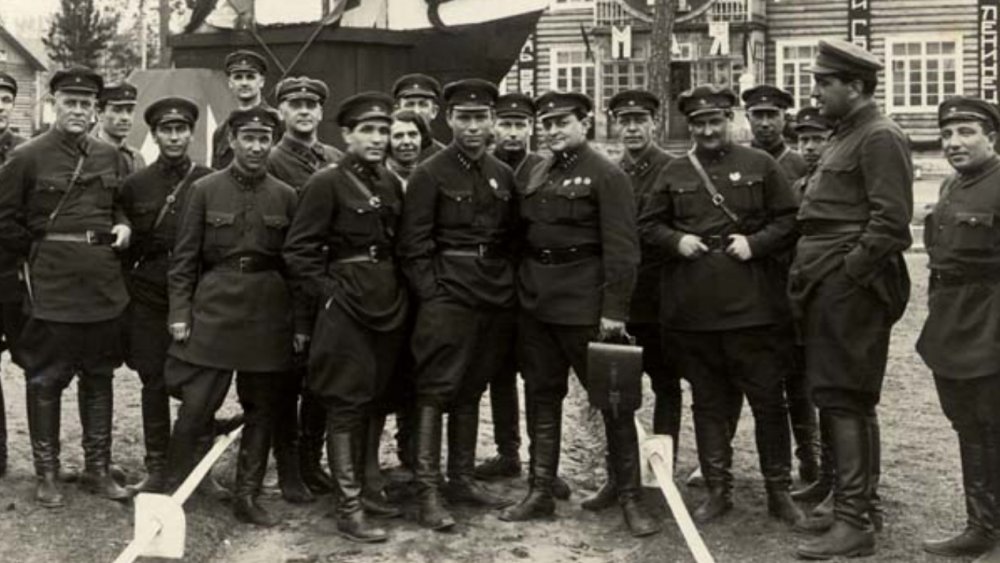Here's How Bad The Conditions Really Were At Stalin's Prison Camps
Siberian locals know Nazinsky Island by its grim nicknames, "Cannibal Island" and the "Island of Death." Established as a labor camp in 1933, per Radio Free Europe/Radio Liberty, it quickly became a vicious addition to the Gulag system under Joseph Stalin. The inmates included criminals, political prisoners, and citizens who simply didn't have documents on them when police saw fit to round people up. Not even children could escape the iron-fisted arm of the law. Kids ended up on Cannibal Island alongside grown men and women.
Disease, violence, and the elements quickly turned the terrain into a burial ground, but officials continued flooding the island with future corpses. Anyone who tried to escape got shot. According to an oral history, prisoners had no food, save for the scraps of bread that guards tossed at them while passing by, and people had to fight for a bite. Dying from starvation, the inmates made food out of each other. Interrogation records revealed that men tied women to trees and sliced off their breasts, calves, and other body parts for food. One inmate denied mutilating live people but admitted devouring the hearts and livers of the dead.
Soviet records indicate that out of 6,700 people imprisoned on Cannibal Island in 1933, only 2,200 survived. It marked one of the darkest chapters in the annals of Soviet prison camps. But the whole system was a black hole of misery.
The Gulag starved inmates and ate them alive
The term "Gulag" is an acronym derived from "Glavnoe Upravlenie Lagerei" (Main Camp Administration), via History, but for countless people, it meant an arduous death. First instituted in 1919 under Vladimir Lenin and later expanded by Joseph Stalin, Gulag labor camps housed 2,000 to 10,000 people at a time. Inmates did industrial projects, mining, and construction for 14 hours straight in horrendous weather. Guards and inmates raped female prisoners.
In a sense, arrests were state-sanctioned abductions. Police could arbitrarily nab and imprison citizens, and the detainees received no attorney, no trial, and no illusion of justice. Per the BBC, Gulag survivor Vasily Kovalyov committed the egregious offense of chopping crops with a sabre, which authorities deemed "anti-Soviet Sabotage." Kovalyov and other inmates had to cut down freezing trees using hand saws and dig in the icy ground with pickaxes. Some inmates had to mine for coal or copper by digging with their bare hands.
Kovalyov and some of his fellow inmates staged a jailbreak, hiding for five months underground. Within three months, they became so desperately hungry that they ate wood shavings. When they thought they had tasted freedom, they got arrested, whereupon Kovalyov tasted the jugular of a sheep dog that police sicced on him. The hungry fugitive kicked the dog with his steel-toed boots, bit its throat, and felt it die in his mouth. He regained his freedom after Stalin's death.

